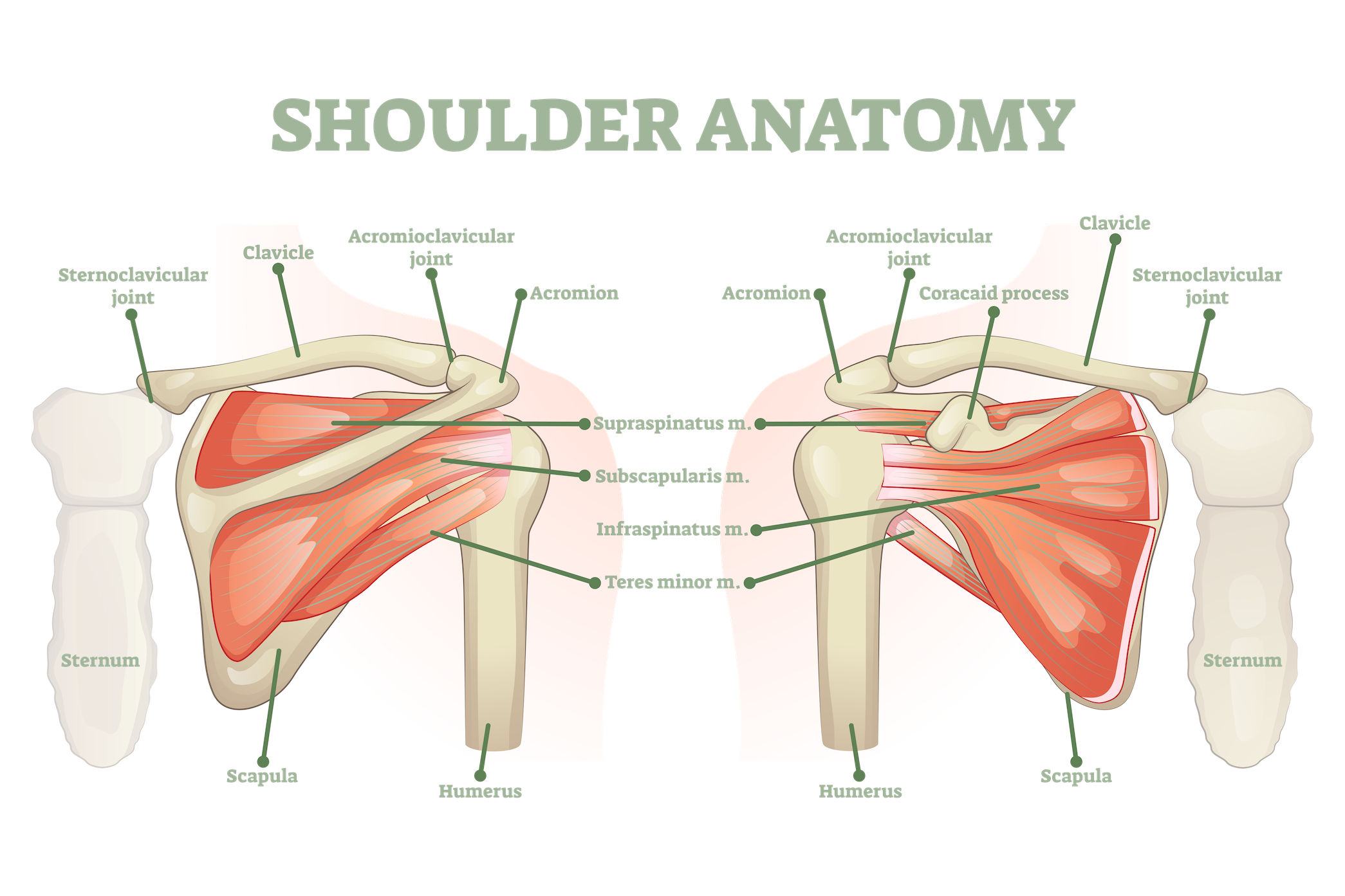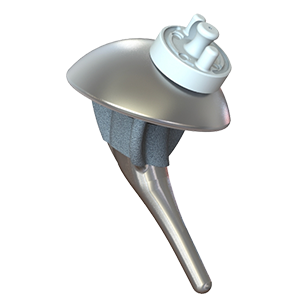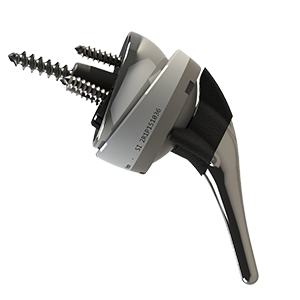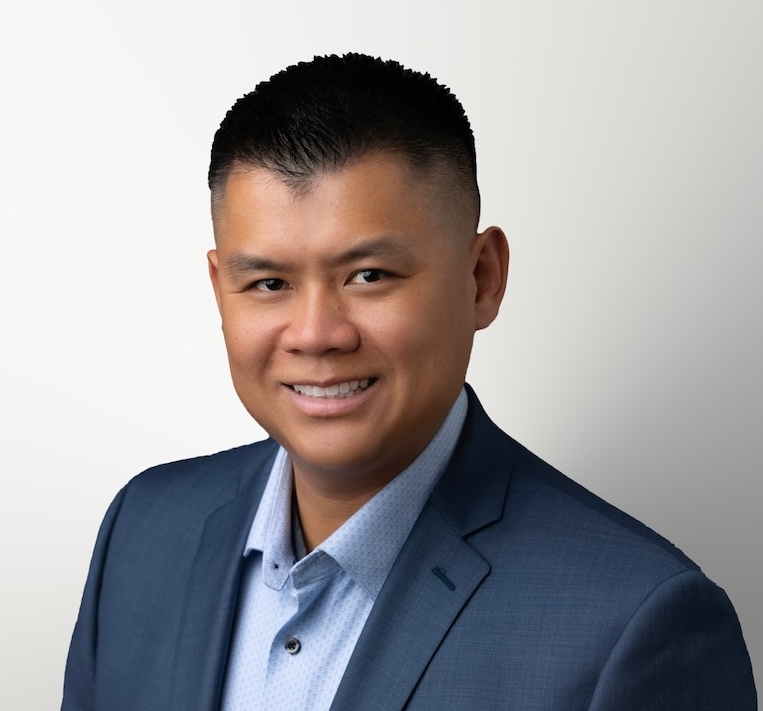Shoulder replacement surgery has come a long way since it was first introduced in the 1950’s. Today, there are two main types of shoulder replacements: total shoulder replacement and reverse total shoulder replacement. In this article, I will share the differences between these two procedures, their advantages, and how to decide which one is right for you.
Anatomy of the Shoulder

Before we dive into the differences between the two procedures, it’s important to understand the basic anatomy of the shoulder.
Normal Shoulder Anatomy
The shoulder is a ball-and-socket joint consisting of the humerus (upper arm bone), the scapula (shoulder blade), and the clavicle (collarbone). The rounded head of the humerus fits into the shallow socket of the scapula, known as the glenoid. This arrangement allows for a wide range of motion but also makes the joint susceptible to dislocation and arthritis.
Reverse Shoulder Anatomy
In a reverse shoulder replacement, the anatomy of the shoulder is altered. The ball and socket are reversed, with the ball being attached to the scapula and the socket being placed on the humerus. This design provides greater stability and can help patients with certain shoulder conditions.
Types of Shoulder Replacements
Total Shoulder Replacement
Components

A total shoulder replacement involves replacing the damaged parts of the shoulder joint with artificial components. The humeral head is replaced with a metal ball, and the glenoid is replaced with a plastic socket.
Indications
Total shoulder replacement is typically recommended for patients with osteoarthritis, rheumatoid arthritis, or post-traumatic arthritis who have intact rotator cuff tendons.
Contraindications
Total shoulder replacement is not recommended for patients with severe rotator cuff tears, significant bone loss, or severe muscle weakness.
Reverse Total Shoulder Replacement
Components

In a reverse total shoulder replacement, the ball and socket components are switched. A metal ball is attached to the scapula, and the socket is implanted in the humerus.
Indications
Reverse total shoulder replacement is recommended for patients with rotator cuff tear arthropathy, severe rotator cuff tears, complex fractures, or previous failed shoulder surgeries.
Contraindications
Reverse shoulder replacement may not be suitable for patients with severe infections, nerve injuries, or those who have previously undergone multiple shoulder surgeries with extensive scarring.
Comparing Total Shoulder Replacement and Reverse Shoulder Replacement
Advantages
Total Shoulder Replacement Advantages
- Better range of motion and more natural shoulder movement.
- Effective for treating shoulder arthritis with an intact rotator cuff.
- Long-term durability of the implant.
Reverse Shoulder Replacement Advantages
- Improved stability and pain relief in patients with severe rotator cuff damage.
- Suitable for complex cases and failed previous shoulder surgeries.
- Can restore function in patients with limited treatment options.
- Long-term durability of the implant.
Surgical Outcomes
Total Shoulder Replacement Outcomes
Most patients experience significant pain relief and improved function after a total shoulder replacement. The success rate for this procedure is high.
Reverse Shoulder Replacement Outcomes
Reverse total shoulder replacement also has a high success rate, especially for patients with severe rotator cuff damage. While the range of motion may be more limited than after a total shoulder replacement, most patients experience significant pain relief and improved function.
Recovery and Rehab
Rehabilitation is crucial for both total shoulder replacement and Reverse shoulder replacement patients. Physical therapy typically begins within a few days of surgery and continues for several months. A gradual return to normal activities is encouraged, and patients should expect to regain most of their pre-surgery function within six months to a year.
Making the Decision
Choosing between a total shoulder replacement and a reverse total shoulder replacement depends on several factors, such as the patient’s age, overall health, and the severity of their shoulder condition. It’s essential to consult with an experienced orthopedic surgeon and one who specializes in shoulder replacement to determine the most appropriate option.
Summary
Total shoulder replacement and reverse total shoulder replacement are two surgical options for treating shoulder pain and dysfunction. While both procedures have their unique advantages, the decision ultimately depends on the patient’s specific conditions and the shoulder surgeon’s expertise. By understanding the differences between these two procedures, patients can make informed decisions about their care.
FAQs
Q: What is the main difference between a total shoulder replacement and a reverse total shoulder replacement?
A: The main difference is the position of the ball and socket components in the artificial joint. In a total shoulder replacement, the ball is on the humerus and the socket on the scapula, whereas in a reverse shoulder replacement, the positions are reversed.
Q: How long does it take to recover from shoulder replacement surgery?
A: Recovery times vary, but most patients can expect to regain most of their pre-surgery function within six months to a year.
Q: Can I still play sports or participate in physical activities after shoulder replacement surgery?
A: Most patients can return to their normal activities, including sports, after a full recovery. However, it’s essential to consult with your surgeon and physical therapist to determine the appropriate timeline and any limitations.
Q: Will I need to have a revision surgery in the future?
A: While it is possible that some patients may require revision surgery, the need for it depends on various factors such as implant wear, loosening, or failure. The great news is that shoulder implant technology and longevity have consistently improved over the years.
You can learn more about the shoulder implant system I use here. Regular follow-ups with your surgeon can help monitor the implant’s performance and address any potential issues early on.





